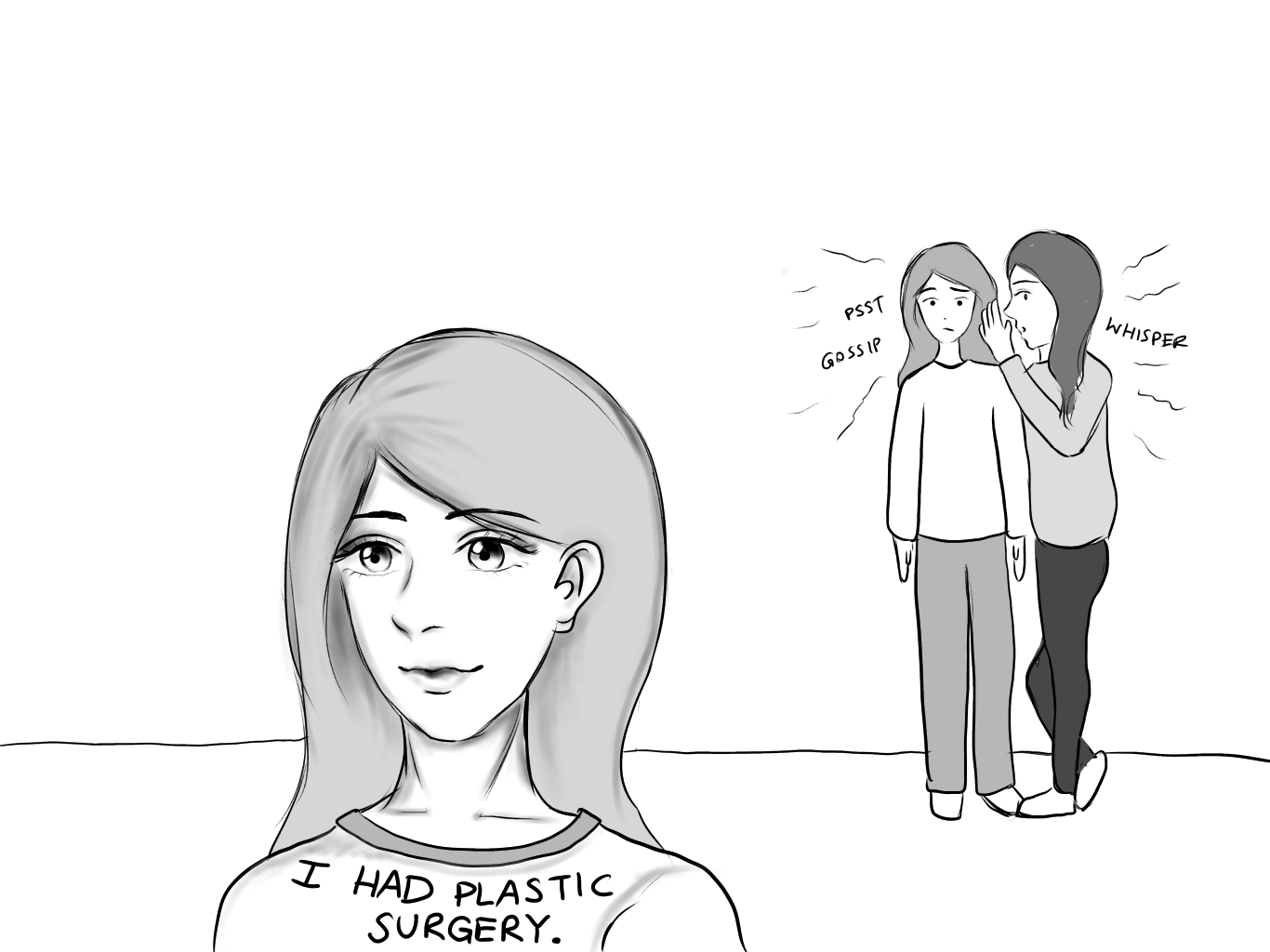
There are many factors Dr. Michael Norris considers before operating on a teenager.
“If the patient or the family comes in with a picture of Kim Kardashian and says ‘I want to look like that’, [I would suggest] maybe not,” said Norris, who has been a plastic surgeon for over 30 years at Mills-Peninsula Hospital.
Norris stresses the importance of the family, teen and plastic surgeon agreeing about the procedure before going along with it. During adolescence, he said, young people can have distorted perceptions of themselves, which may be responsible for the rising popularity of plastic surgery.
Typically, he will only operate on teenagers and children who suffer from genetic abnormalities or congenital disorders. Junior Ariela Leventhal who suffers from sleep apnea recently underwent plastic surgery for medical reasons.
Leventhal had maxillofacial orthognathic surgery, a type of jaw surgery that corrects and realigns the bones of the jaw to improve its function, two months ago.
“I look very different [after the surgery] and emotionally that’s a really jarring change,” Leventhal said. “One of my family friends that I grew up with, I saw … for the first time since the surgery two days ago and he asked me what my name was.”
Leventhal recalled her emotions before the surgery.
“I was definitely scared about how much it would hurt [and] if [my face] would get messed up. There’s a lot that can go wrong,” she said. “I wasn’t really excited to look different.”
Her older brother, senior Ilan Leventhal, underwent the surgery for sleep apnea as well. Like many people who undergo plastic surgery, be it medical or cosmetic, recovery was one of the most challenging parts of the process.
“The first day I spent in the hospital there was a lot of blood,” said Ilan Leventhal. “The first night I was in the hospital, the second night I got to go home, but I was really out of it. I couldn’t sleep.”
Ariela Leventhal has faced stigma from getting her surgery despite it being for medical reasons.
“There’s a huge stigma around plastic surgery and in cosmetic surgery,” said Ariela Leventhal. Some classmates even laughed when they found out she had gotten the procedure over the summer, she said.

However, Norris has seen attitudes shift in the past few decades.
“In previous generations … at a certain age group there was a tradition that women did not want their neighbors or their friends to really know [they got plastic surgery], they didn’t really broadcast [it].” Norris said. “I think there’s another group, perhaps a little bit younger demographic, who are very proud of it and tells everybody… So I think definitely… [plastic surgery] is less taboo.”
Plastic surgery and cosmetic surgery are often used interchangeably, though they are different in purpose and result. While cosmetic surgery mainly focuses on the patient’s appearance, plastic surgery is dedicated to fix problems that arise from birth, accidents or disease of the patient.
Additionally, cosmetic surgery also tends to not be covered by insurance.
The stigma surrounding cosmetic surgery is still prominent despite there being more than 236,000 cosmetic procedures performed in 2012 on teens, according to the American Society of Plastic and Reconstructive Surgeons.
“I think that [the rise of plastic surgery] is probably a phenomenon… perhaps because of the internet age,” Norris said.
According to the American Society of Plastic Surgery, from 2000 to 2016 there was a 115 percent increase of plastic surgery procedures.
“Probably the No. 1 procedure currently being done across the country would include some sort of liposuction, breast augmentation or implants,” Norris said.
Although his views have not changed, Ilan Leventhal notices that his feelings towards those who chose to receive cosmetic surgery have been affected after his surgery.
“Because of the pain that I underwent during surgery, I have more respect who get plastic surgery just because of how much it hurts,” he said. “I guess it takes a lot of dedication to want to look good and look attractive if you’re willing to go through that much pain to do it.”



